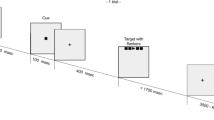Abstract.
We studied movement-related EEG oscillatory changes in the alpha, beta and low-gamma frequency bands in three different paradigms of movement, namely ballistic, sustained, and negative (muscle relaxation). A time-frequency analysis of non-phase-locked activity in the 7–47 Hz range was performed on movement-centred EEG sweeps using wavelet filters and Gabor transforms. All three movements were accompanied by a decrease in beta activity that began contralaterally about 1.5 s prior to the onset of movement but that extended to both sides near the beginning of the movement. This decrease was followed by a rebound after the end of the movement in the ballistic and negative movements. A decrease was also seen in the alpha band during the three paradigms, which began later (1 s before movement) and lasted longer. An increase in gamma activity was only seen during ballistic and sustained movements, while a decrease in gamma energy was observed during negative movements. It was concluded that changes in the beta band of the EEG before movement are related to the preparation for the movement, but an important afferent component may be present in the later changes. Gamma band activity may be just involved in the execution of the movement, related to muscle contraction.
Similar content being viewed by others
Author information
Authors and Affiliations
Additional information
Electronic Publication
Rights and permissions
About this article
Cite this article
Alegre, .M., Labarga, .A., Gurtubay, .I. et al. Movement-related changes in cortical oscillatory activity in ballistic, sustained and negative movements. Exp Brain Res 148, 17–25 (2003). https://doi.org/10.1007/s00221-002-1255-x
Received:
Accepted:
Issue Date:
DOI: https://doi.org/10.1007/s00221-002-1255-x




